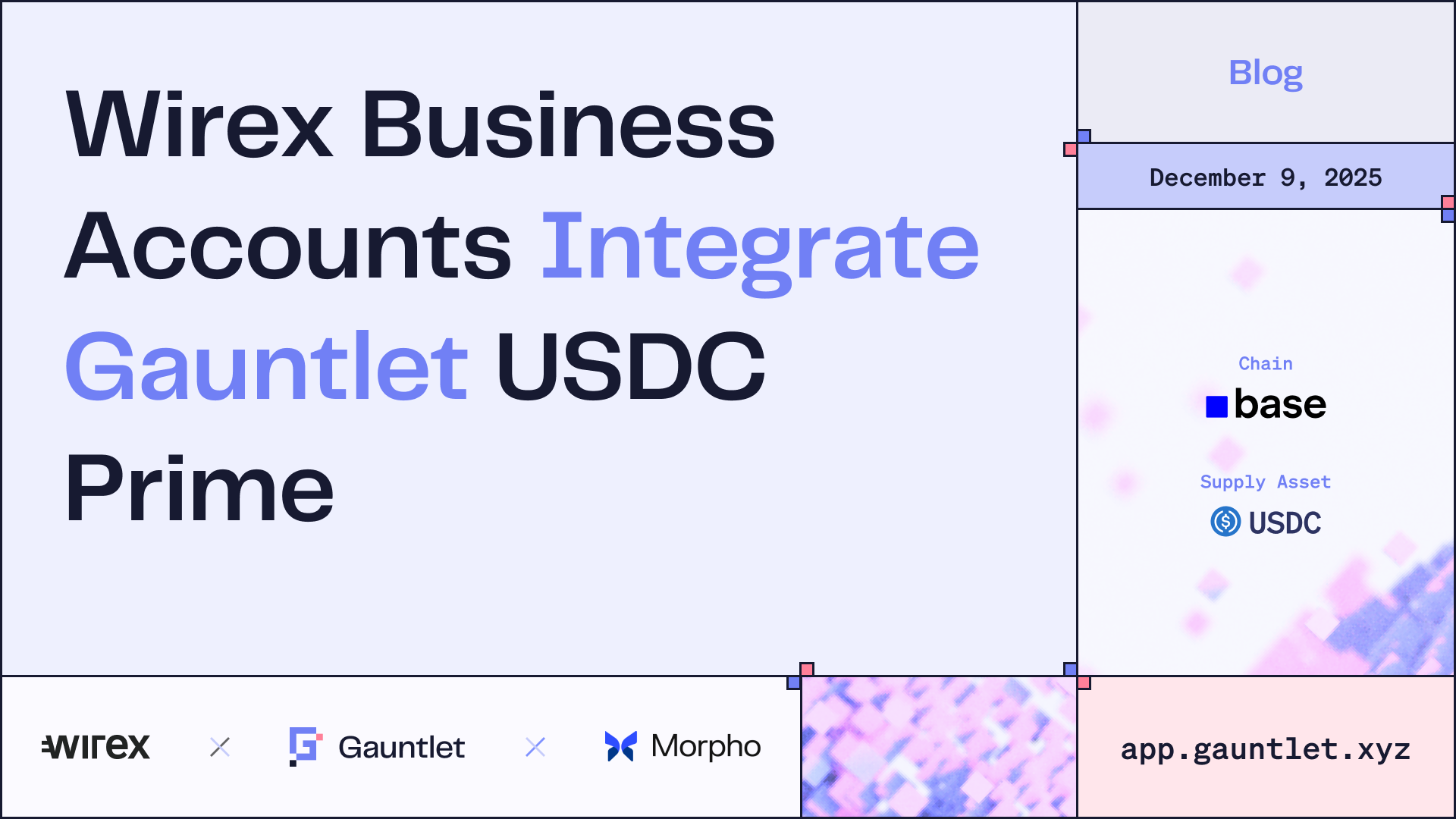Given AVS development is still in progress and the transient status of slashing rules and fee generation, we aim to provide a high level framework on how to approach Eigenlayer staking, with focus on how to select AVS to secure. We examine yield generation and how that flows from transaction fees at the AVS level to how that accrues at the LRT level. The below diagram is a simplified representation of how ETH may flow from the LRT minter to operators and AVS, abstracting away some of the engineering and contract specifications. We will focus on the RHS of the below diagram.

Contents
- On AVS selection
- On additional considerations for selection
- On including new AVS
- Conclusions
On AVS selection
A general approach with \(n\) different AVS should be to optimize the risk adjusted total returns of the fee generation less the expected slashing, over some future time period. Given AVS yield over time likely varies, this future time period can be broken up into distinct subperiods, where at the end of each we perform the optimization and rebalance our AVS selection. That being said, optimizing for risk adjusted return (i.e. sharpe) may yield insufficient reward than optimizing for total return at each time step.
For simplicity, we consider optimization over a constant window of 2 weeks (double the AVS withdrawal period). This allows comparison between the yield resulting from current AVS selection compared to our future AVS selection after rebalancing. A more nuanced window can take into account LRT idiosyncratic creation and redemption times.
More formally, we wish to perform the following optimization with the following constraints at each rebalancing time \(t\). Let \({\rm{AVS}}\) correspond to the set of all AVS live and \(O\) correspond to the operators associated with the LRT.
\[\begin{align*}&& \max_{\textbf{AVS}} g\left(\sum_{o \in O}\sum_{a \in \textbf{AVS}} w_ff(\textbf{c}_{a,o}, t) - w_ss(\textbf{c}_{a,o}, t) \right) \\ \text{subject to} && \textbf{c}_{a,o} < \textbf{DRE}_{o} \\&& \sum_{a \in \textbf{AVS}} ||\textbf{c}_{a,o}|| < L(\textbf{DRE}_{o}) \\\text{for each } a \in \textbf{AVS}, o \in O\end{align*}\]
\(g\) is a utility function on the difference between the fee generation \(f\) and slashing \(s\). We provide more color on how \(g\) may behave based on different risk preferences in the section below.
- For an explicit example, should the LRT focus on net rewards maximization, \(g\) becomes an expectation of that difference conditioned on past realizations of \(f\), \(s\).
- \(f,s\) are functions on fee generation and slashing respectively, and take in the current rebalancing time \(t\)
- \({w_f}\) and \({w_s}\) are tuning weights on how much fee generation and slashing should contribute to our AVS selection.
\({\rm{DR}}{{\rm{E}}_o}\) represents the portfolio of Delegated Restaked ETH to the operator \(o\), composed of delegated LST and delegated staked beacon chain ETH.
\({{\bf{c}}_a}\) corresponds to how much each underlying in operator \(o\)’s restake portfolio \({\rm{DR}}{{\rm{E}}_o}\) we choose to delegate to AVS \(a\).
\(L({\rm{DR}}{{\rm{E}}_o})\) corresponds to a global leverage limit on the underlying restaked ETH portfolio for each operator.
- In the naive case where all types of collateral (i.e. beacon chain ETH vs stETH) are treated equally on the marketplace as restake security, and each type of collateral unit can only secure one AVS, then \(L\) is equivalent to the total units of restake.
- As a numeric example with the above assumptions, suppose an operator had 100 swETH, 100 stETH, and 100 beacon chain staked ETH delegated to it. Then \(L({\rm{DR}}{{\rm{E}}_o}) = 300\).
Put together, the above seeks to optimize the total expected fee generation less the expected slashing over some future time period, conditioned on
- LRT’s portion of restake securing AVS \(a\) is less than its total LST portfolio.
- LRT’s restake usage is less than its maximal power defined by its total LST portfolio, for each operator.
As an explicit example for the LRT’s more risk averse preference towards yield accrual, the LRT could consider the following representations for the utility function \(g\).
- The LRT can choose to penalize AVS slashing significantly more than yield generation by setting \({w_s} > {w_f}\).
- The LRT can also choose to adjust the fee generation term from linear to sublinear (i.e. \(\log {w_f}f({{\bf{c}}_{a,o}},t)\) vs. the linear term). This has a direct impact on the decision boundary between choosing to swap a high-slash, high-yield AVS with a less extreme AVS.
- The LRT could also target an optimistic benchmark yield with the intention that yield increases beyond this benchmark begin to decay in utility. \(g\) would thus be sublinear with respect to \(f - s\) (such as logarithmic)
Put together, one example of objective function for the LRT for AVS selection could take the form
\[\mathbb{E}\left[ {\sum\limits_{o \in O} {\sum\limits_{a \in {\rm{AVS}}} {\log f({{\bf{c}}_{a,o}},t) - 2s({{\bf{c}}_{a,o}},t)} |{\cal F}} } \right]\]
where \({\cal F}\) is the filtration of past realizations for \(f\) and \(s\).
On additional considerations for selection
Considerations for each AVS
Based on the LRT’s risk preference, there can exist additional considerations at the AVS level that adjust the above optimization. These bounds aim to limit the downsides associated with a particular choice of AVS, or enforce a baseline level of profitability, due to variation in AVS slashing conditions.
Each AVS has slashing penalty that is bounded from above.
\(\mathbb{P}(\sum\nolimits_{o \in O} {f({{\bf{c}}_{a,o}},t) - s({{\bf{c}}_{a,o}},t) \le {c_{slash}}|} {\rm{ }}{{\rm{O}}_a}) < \delta \) where \({{\rm{O}}_a}\) is all the operators’ stake for AVS \(a\\, {c_{slash}}\) is a lower bound on tolerable AVS payout over our designated time period
- This also takes into account potential adversarial outcomes induced by operators not associated with the LRT, i.e. cost to long attack the AVS and manipulate the stake used to secure that AVS.
- The bound can be made stricter by imposing an absolute bound rather than a probabilistic one.
Each AVS has payout that is positive in expectation in isolation.
\(\mathbb{E}\left[\sum_{o \in O} f(\textbf{c}_{a,o}, t) - s(\textbf{c}_{a,o}, t)\right] \geq c_{min} > 0\) where \({c_{\min }}\) is corresponds to a minimum expectation of AVS payout.
- Nonzero correlation and inter-dependencies between AVS payouts could necessitate adjusting the above condition.
Pairwise AVS slashing correlations are upper bounded.
\({\rm{Corr}}(s({{\bf{c}}_{{a_i},o}},{t_k}),s({{\bf{c}}_{{a_j},o}},{t_k}){|_{k \ge {t_{start}}}}) < {c_{correlation}}\) across all operators \(o\) and AVS pairs \(i,j\)
- Depending on preference to consider entire realized history of slashing or a more recent history, this correlation can be taken on the slashing timeseries from time 0 or a defined \({t_{start}}\)
- Taking the correlation of a timeseries on slashings over a time period accounts for effects of slashing dependency between AVS, i.e. \(\mathbb{P}(\text{Slash}(i, o, k) > 0| \text{Slash}(j, o) > 0) \neq \mathbb{P}(\text{Slash}(i, o, k) > 0)\) for when \(o\) is already slashed on AVS \(j\). Informally, should there be slashing dependency between AVS \(i\) and \(j\), that means that a slashing on \(i\) will increase the probability of slashing on \(j\) for the same operator in the future.
- This reduces the variance in the LRT’s total payout, and limit downside resulting from second-order effects with operator failure.
Considerations for iterative performance
Performance in previous windows may give information on how future optimization could be improved, such as making constraints tighter (i.e. more limiting parameters) if previous AVS selection has been more punitive than expected, or perhaps adding additional filtering for future AVS selection. Ultimately, the LRT consistently and stabling accruing yield will be an important factor in driving usage.
Iterative rolling sharpe ratio maintains above a threshold.
\({\rm{Sharpe}}({t_{sharpe}},\sum\nolimits_{o \in O} {\sum\nolimits_{o \in {\rm{AVS}}} {f(} } {{\bf{c}}_{a,o}},t) - s({{\bf{c}}_{a,o}},t)) \ge {c_{sharpe}}\) where \({c_{sharpe}}\) is the rolling window where risk adjusted returns are calculated, and \({c_{sharpe}}\) is our minimum sharpe benchmark
- As an example, underperformance of risk adjusted yield relative to a minimum benchmark \({c_{sharpe}}\), may signal that a higher penalty on the slashing term should be applied in the utility function \(g\).
On including new AVS
Upon EigenDA launch, it will likely be the only AVS live. Assuming objective, attributable slashing conditions, the naive approach of concentrating 100% of operator stake on securing EigenDA is likely optimal. In the event that slashing conditions involve degrees of subjectivity, penalties are excessive, or EigenDA transaction volume and associated fee generation and subsidies insufficient, then it could make sense to not secure EigenDA at all. This is the singular case with one AVS; as more AVS launch and go live, considerations regarding inter-AVS impacts on yield generation begin to appear.
As a result, finding stake sizing for new AVS involves speculation on the net yield generation for the new AVS and its slashing conditions. Proxying the yield generation for new AVS informs a baseline sizing, while the slashing conditions offer adjustments to that baseline sizing.
Estimates for yield generation from the new AVS can be derived from a combination of previous AVS launch yields, L1 yields
- Any estimation will likely be coarse with a high degree of error due to lack of data
- As an example, baseline sizing for new AVS can be a function of the difference between our proxy yield and our current portfolio yield.
How to factor in sizing adjustments up or down due to slashing conditions depends on the new AVS slashing construction.
- As an example, more aggressive slashing conditions can be a direct multiplier on our baseline sizing such that our final sizing is \(m_{slash} * size\). More aggressive slashing conditions (perhaps being non-attributable, slashing on downtime, etc) can result in lower \(m_{slash}\).
Conclusions
We lay out a mathematical framework above on how to approach AVS selection. Fundamentally, allocations among different AVS is rooted in our estimation for net yields and slashing from those AVS, with global constraints from Eigenlayer mechanisms. Based on risk aversion, we may also impose a number of conditions that filter AVS on a more granular level. The lack of formalized information regarding AVS slashing conditions can make it difficult to generate specific recommendations on stake allocation among different AVS. Nonetheless, we seek to find generalized principles around AVS allocation that can remain robust.
There is a quite natural question that follows - how do we capture the inherently developing nature of restaking? This dynamism and relationship between restakers, the marketplace, and the AVS’s - and how they interact with natural market variance and shocks - suggest that careful agent-based simulation can find that intricate balance between restaking yield and AVS slashing penalties, and ultimately drive greater capital efficiency.
Research
View the full presentation
Read the full paper









